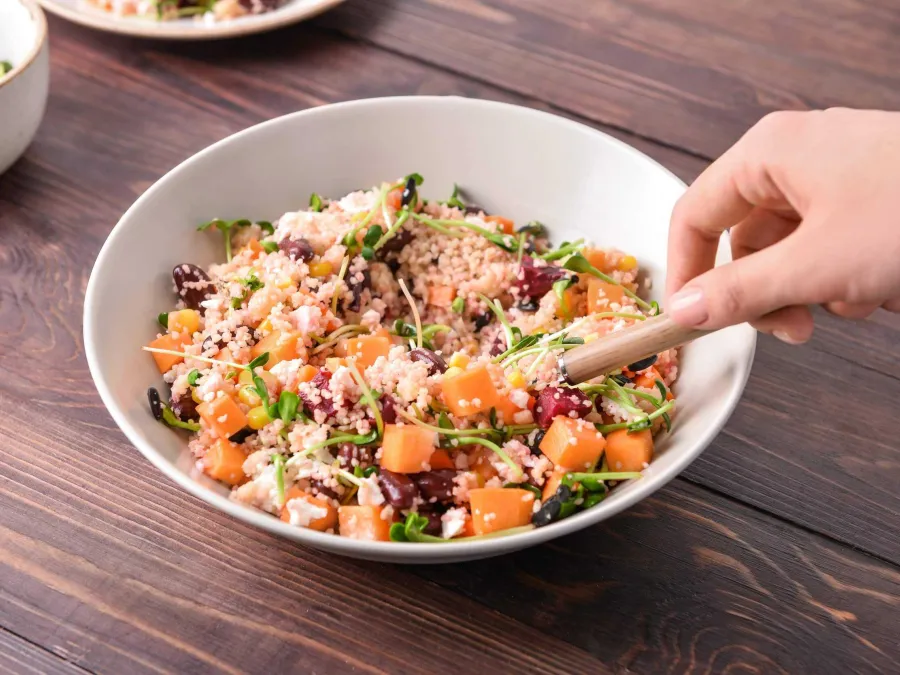Serves = 4
1 cup couscous
350g kent pumpkin
2tsp Moroccan seasoning
1/3 cup cranberries
100g reduced fat feta cheese
Handful mint leaves, finely chopped
1/3 cup slivered almonds
A hearty and delicious Moroccan salad, great as a side dish

Nutrition information (per serve):
• Energy (1776kJ)
• Protein (15.4g)
• Total fat (15.9g)
• Saturated fat (3.0g)
• Carbohydrate (51.1g); Starch (34.2g), Sugars (16.9g), Added sugars (8.6g), Free sugars (8.6g)
• Dietary fibre (6.6g)
• Sodium (385mg)
• Calcium (155mg)
• Iron (2.0mg)